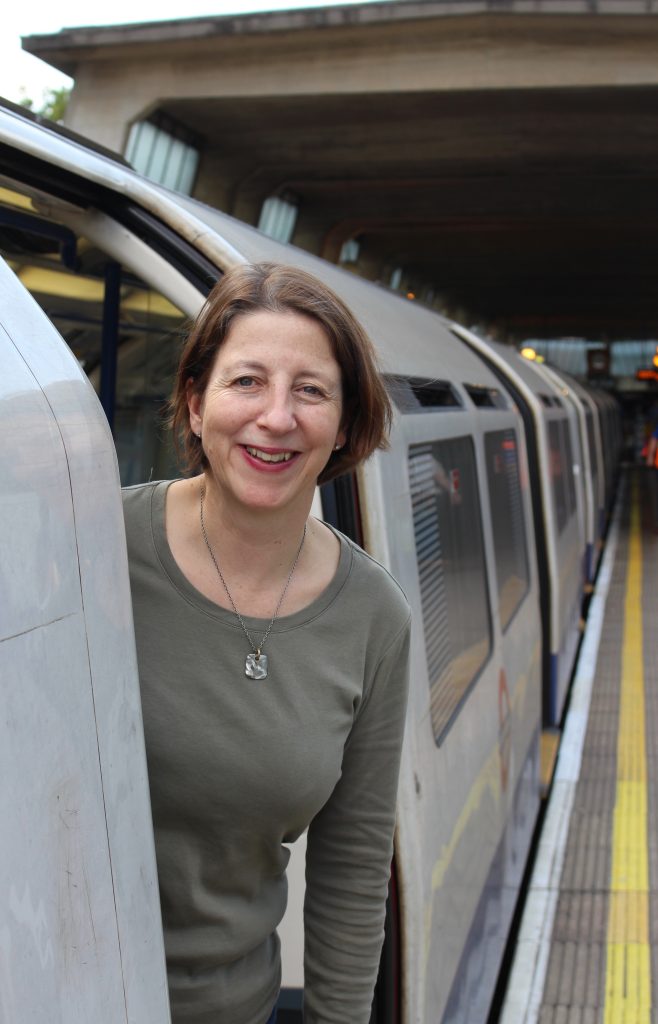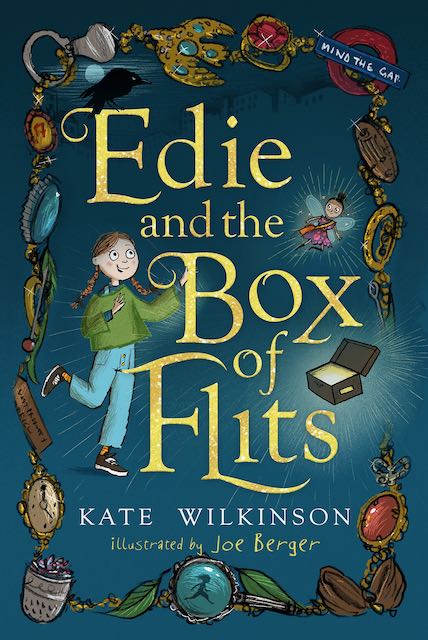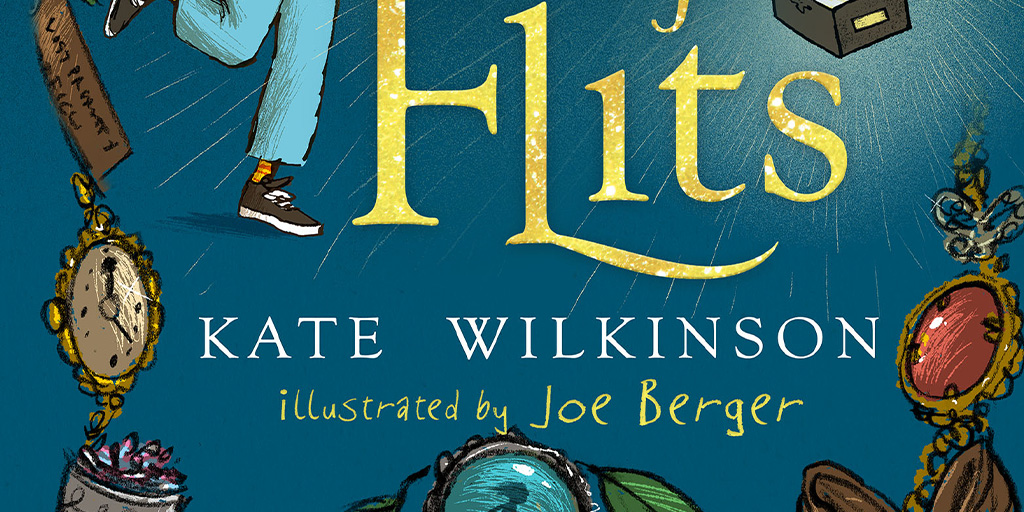Kate Wilkinson grew up in Sussex. She began her career in Theatre in Education in Manchester, famously playing the part of the ‘large intestine’ in a science show. Kate joined BBC Schools Radio where her first commission was children’s stories for the Listening Corner. She worked for BBC Radio 4 as a reporter and producer, primarily on arts programmes, literary features and readings, such as Book at Bedtime and Book of the Week.
In 2016, she applied for the MA in Writing for Young People at Bath Spa University.
Edie and The Box of Flits and Edie and the Flits in Paris are her first published books.
What’s your background?
I originally trained to be a teacher before turning to radio journalism and I have worked in radio for the past thirty years recording everything from boiling spaghetti and a greyhound race to slippery politicians and a poet in a broom cupboard. I was on the staff at BBC Radio 4 for about twelve years and then became a freelance audio producer in the early 2000s. I still work for Radio 4 mostly abridging books for Book of the Week and Book at Bedtime, but I combine this with producing audiobooks for publishers and podcasts for museums and heritage sites.
Have you always written? How did you get started?
As a child I had an imaginary chicken that figured in a lot of early adventures and also had a tendency to perform rambling, surreal stories (usually about a walrus that flew) to my poor mum. The seeds of my children’s writing really began in the early days at the BBC. I worked at Schools Radio and was commissioned to write a long-running series of children’s stories for a pre-school slot. I realised at the time I was hugely drawn to writing for children, but there were few slots in radio devoted to it. So I moved into production and began to work for the Radio 4 Arts Unit and was sucked into the giant wheel of a daily arts magazine programme.
How did you get into writing childrens’ literature?
A few years ago I joined a part-time MA in Writing For Young People at Bath Spa University as the deadlines and last minute stress of my radio life began to pall. It was a very pragmatic course which appealed to me in that we learnt a lot about the industry as well as having our work rigorously picked over by co-students. Having spent a lifetime editing scripts and squeezing material into a timeslot, I really enjoyed cutting my stories down to size and re-drafting – in fact I probably spend too much time doing that in the early stages – obsessing over a paragraph before nailing a first draft!
How did you get your idea for Edie and the Box of Flits?
I’ve lived in London so long that it has become the backdrop for all my stories. It’s so full of curiosities and unexpected scenes that it’s the perfect inspiration. The Edie stories actually came out of the endless time I spent waiting for my connection home at Highbury and Islington. I’d sit on a bench watching the grubby, streetwise Underground mice hauling old sandwich crusts and crisps from the platform back to their holes and I decided to create a parallel world of small people who lived in the deserted stations and tunnels of the London Underground and existed by foraging. The London Transport Museum has brilliant tours of Hidden London including all the ghost stations which helped with the research.
How did you settle on writing for an age group that is no longer toddlers, not yet teens?
The 7 – 11 age group is for me the most joyful of childhood – their imagination is boundless, they are brave and unjudgmental, and the self-consciousness of the teen years has not yet set in. Whenever I go into schools, I read my first chapter and ask children to come into an imaginary Bakerloo line carriage with me and act out some of the characters. They do it with so much commitment and spark. The Edie stories are actually about growing up and losing some of that.

How did you find a publisher? Was it a quick process or drawn-out? Did you have an
agent?
Part of the MA course was to have a chapter of our ‘work in progress’ published in an anthology which was circulated to agents and editors. I was lucky enough to be taken on by Helen Boyle at Pickled Ink who took a punt on me as she had only read part of my manuscript before she signed me. It took a while to wrestle it into shape and to send it around publishers, but eventually Piccadilly Press (Bonnier) offered me a two-book deal. It was an advance the size of a postage stamp though!
Did you and illustrator, Joe Berger, find each other, or did the publisher bring you together?
The publisher commissioned Joe to do the illustrations and at first it felt as if they were trying to keep us apart as we never actually met face to face and all the communication was via the art director. As we were going to be working on two books I emailed Joe and sent him a London Transport postcard asking if he’d like to meet for a coffee. Now we are firm friends.
What are you currently working on?
I’ve decided that all my stories will in some way be connected to London so I’m working on another chapter book about a boy called Davy Larkin who lives on the banks of the River Thames. He makes friends with a boy who arrives in London on a cargo ship and a girl who lives by London Bridge and wants to be a magician’s apprentice. It’s not quite as light and fluffy as the two Edie books, as it’s about a journey and confronting one’s identity.
What does success look like for you as a writer?
At first I found it very hard when I realised that I would never make enough money to give up the ‘day job’ and, also, that publishers don’t market your books in the way that you might expect. I don’t think I had appreciated how much I would have to generate interest in my books myself, organise school visits, trawl around bookshops and battle with social media. At times it has felt quite lonely. Success as a writer for me will never be shiny or glittery, but when I start a new book and make time to wander about London thinking about my characters, I feel happy.
Edie stopped to listen.
There it was again – tap, tap, tap. It was coming from somewhere high up.
She dragged a chair across the floor and levered herself up until her head was level with the top shelf. She ran her fingers along the surface, feeling her way until they rested on the sharp corners of a wooden box.
She felt certain it was the box. Her box. The one she had found on the Bakerloo line.
Sweat prickled on her forehead as she slid it off the shelf. She could now see that there was a small pane of glass on one side. The tapping became louder and more frantic. Edie held the box up until the pane of glass was level with her face. A tiny creature was beating its fists against the glass. It was about the size of Edie’s thumb. It had wings that were whirring furiously and a puff of hair that was like the fur on the tip of a cat’s tail.
The creature stopped banging and started to wave wildly. Then, clear as a tiny. bell, words began to form.
‘I want to come out RIGHT THIS MINUTE!’
TWITTER: @CLATTERMONGER
